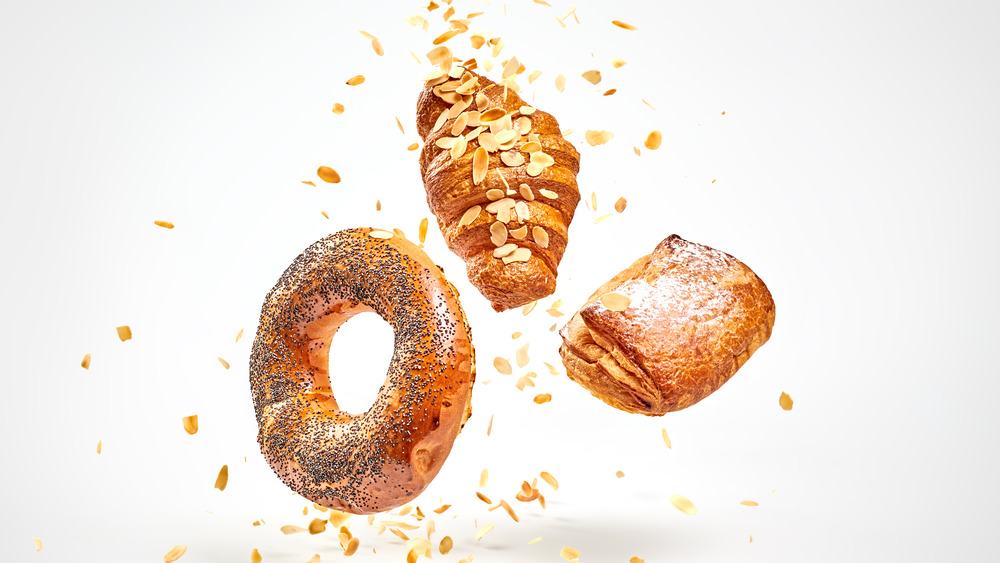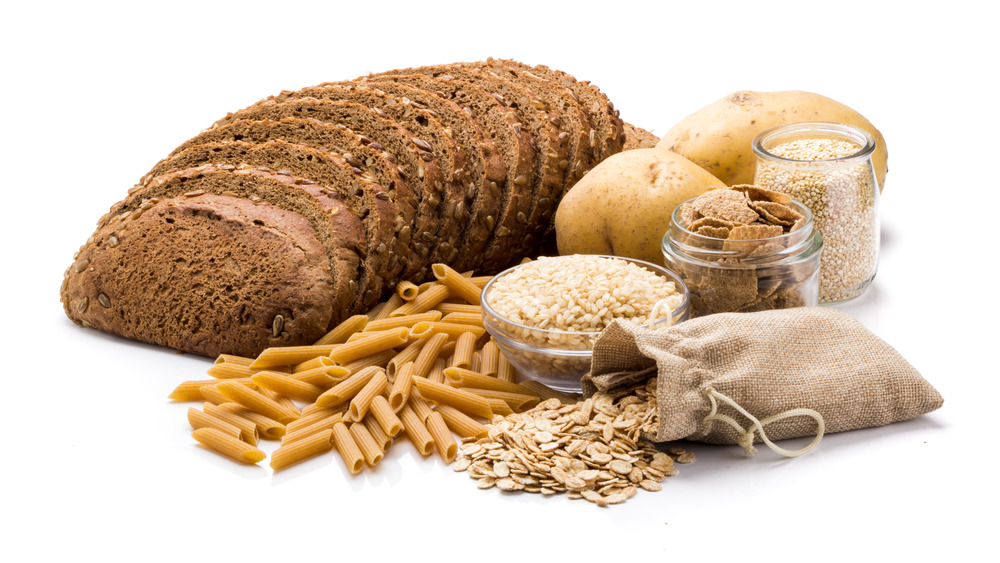Avoid These Starches If You're Trying To Stay Healthy
With the low-carb diet craze still moving along at full strength, it's easy to reduce our view of carbohydrates to an oversimplified formula: carbs = bad. But in reality, there's more to the story. Everyone needs some carbohydrates for health and energy production. According to Healthline, starches are the most commonly consumed type of carbohydrate (followed by sugar and fiber). Therefore, it's important to understand the difference between good and bad starches.
Good starches do more than just fill you up. They also provide plenty of healthy fiber, vitamins, and minerals. The key to identifying healthy starches lies in knowing how 'whole' they are. Various grains, root vegetables, and beans make up most starches, and the less processed they are, the more health benefits they offer. Whole wheat, for example, contains the entire wheat kernel, providing not only the starchy endosperm, but also the nutrient-packed germ and bran. Anna Taylor, MS, RD, LD, CDE, told Cleveland Clinic, "The healthiest starchy foods are the ones bursting with protein and fiber." That would be foods like beans, quinoa, and wild rice.
Whole foods provide healthy carbs
Bad starches, on the other hand, fall into the category of what nutritionists call "empty calories." Think white bread and pasta, cookies, and pastries. These are all made with refined flour, which has been stripped of nearly all its nutrients. These carbs lack the fiber necessary to slow digestion, causing rapid spikes and falls in blood sugar. They make you feel full without providing real nourishment, and leave you tired and feeling sluggish. Worse yet, a diet high in refined starches has been linked to increased risk of type 2 diabetes, heart disease and weight gain.
Carefully reading food labels is an easy way to figure out whether a product contains healthy starches or not. The key word to look for is "whole." Sandra Meyerowitz, MPH, RD, nutritionist and owner of Nutrition Works in Louisville, Kentucky, says, "Read the box so you know what exactly you're getting. If the first ingredient is whole-wheat flour or whole-oat flour, it's likely going to be a complex carbohydrate" (Everyday Health). And that means you're getting a lot more nutritional bang for your grocery buck.


